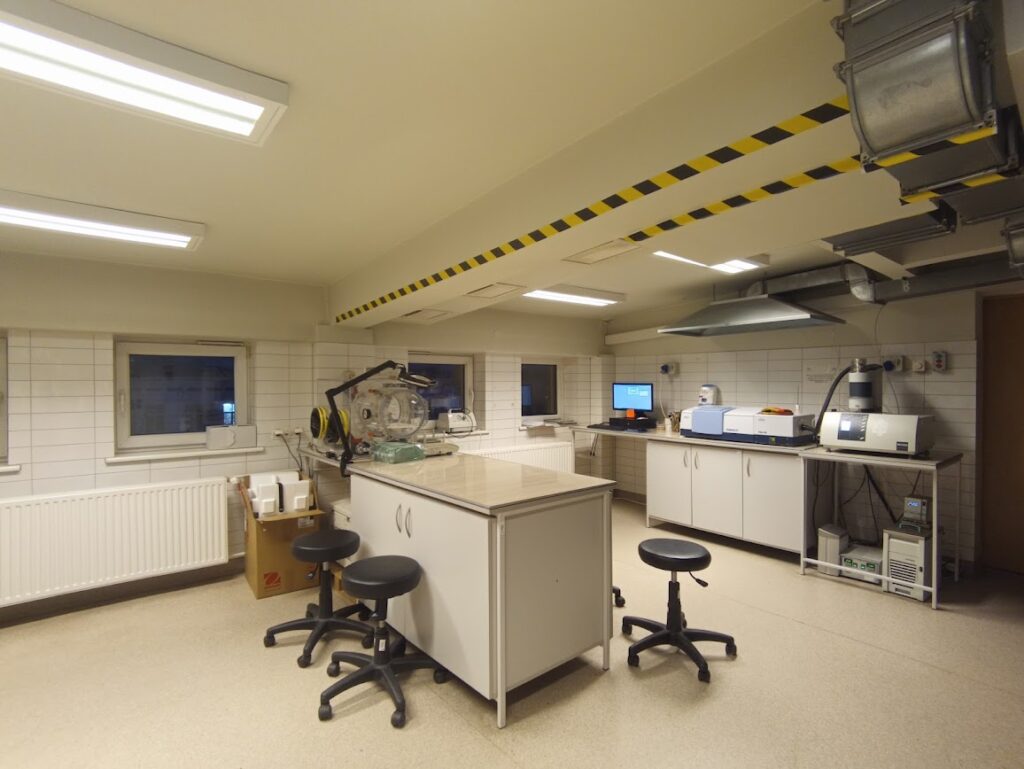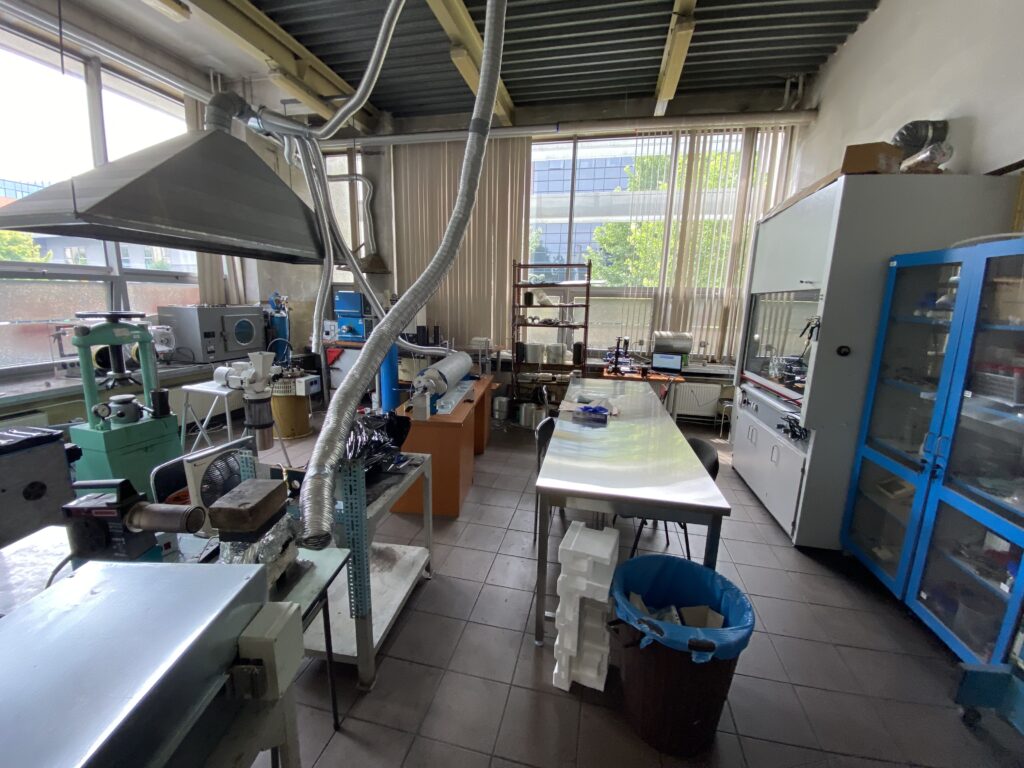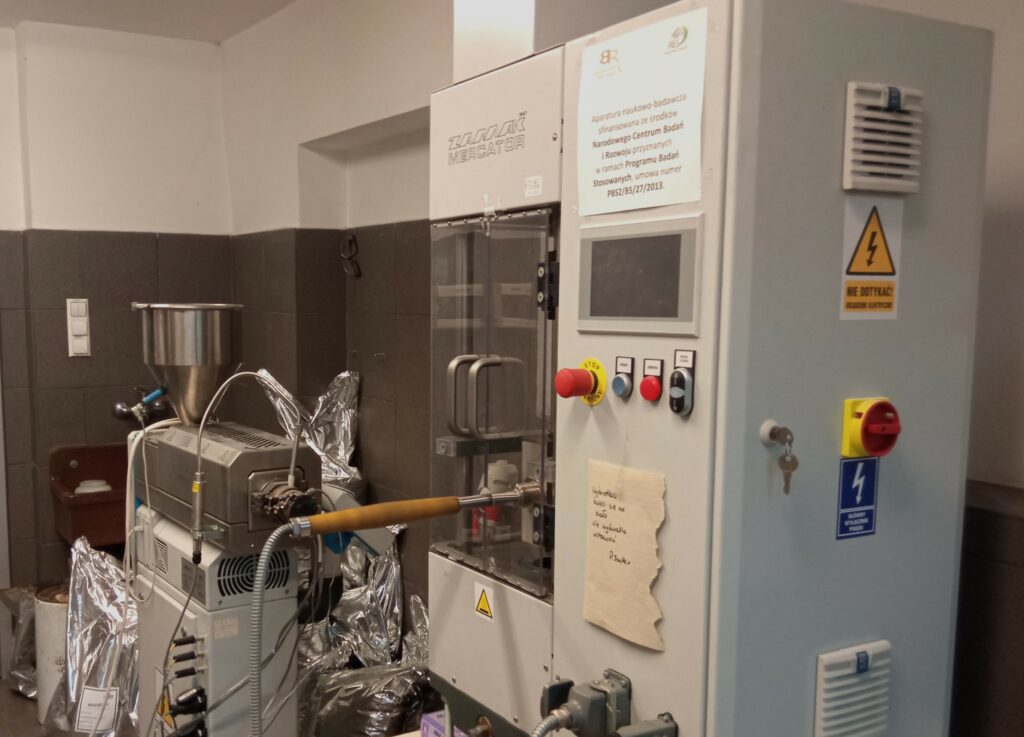Laboratory for testing the properties of carbon materials and composites
Technology laboratory of carbon and composite materials
Composites technology laboratory



The laboratory is mainly used to obtain carbon, composite, nano- and biomaterials and to study their thermal, structural and physicochemical properties.
Laboratory equipment includes:
- FTIR spectrometer (Bruker Tensor 27) for measurement in transmission, ATR, mirror reflection (SPEC) or DRIFT mode (possibility to provide samples in the form of foils, powders, layers, solids);
- TG/DSC thermal analyzer (Netzsch STA 449 F3 Jupiter) with FTIR TGA-IR gas analyzer (Bruker) – ability to measure volatile thermal decomposition products in real time;
- tensiometer for measuring surface and interfacial tension, CMC, contact angle of solids, fibers and powders, as well as density of liquids and solids, assessment of sedimentation and resistance to sediment penetration (KRUSS K100);
- BioX Cellink bioprinter, equipped with three pneumatic heads with a heating function up to 65°C, one pneumatic head with a cooling and heating function (range 4 – 65°C) and one head for printing thermoplastics from granules;
- ultracentrifuge (Sigma 3-30KS) – enables centrifugation of micro and nanomaterials from organic and inorganic solvents, under controlled temperature conditions (-20 to 40 °C);
- muffle furnace up to 1000°C (Nobertherm L9/11/B 180) – possibility of programming multi-stage heating of samples at set temperatures;
- vacuum dryer (Vacucell 55) – possibility of programming multi-stage heating of samples at set temperatures;
- chemical-resistant diaphragm vacuum pump (MPC-3012);
- electric magnetic stirrer equipped with a heating function with precise temperature control (Arex-6 digital Velp scientifica with a digital VTF thermoregulator), equipped with aluminum caps for even heating of round-bottom flasks;
- Heating/cooling range: 10 – 300°C, precision of temperature control: 0.5°C, possibility of programming heating and cooling cycles for up to 25 hours.
The laboratory is used mainly for the following purposes: obtaining carbon and composite materials, high-temperature thermal treatment of materials and their electrical, electrochemical and mechanical tests. In addition, numerous experiments are carried out, often going beyond the laboratory scale.
Laboratory equipment includes:
- tube furnaces with controlled atmosphere and muffle furnaces (own design) allowing for temperature treatment up to 1000°C;
- high-temperature tube furnace (up to 2000°C) with a controlled atmosphere (own design);
- dryers and heating chambers;
- autoclave with oil heating jacket up to 280°C, type LA500;
- system for testing electrical conductivity using the 4-point method by Ossila;
- electrochemical station for electrochemical tests by Ossila;
- Ossila deep coater coating device;
- DP90 softening and dropping point system (Mettler Toledo);
- laboratory Fischer tamper (Multiserw);
- laboratory grinder Pulverisette 16 (Fritsch);
- high-energy (intense) laboratory mixer RV02E (Eirich);
- universal testing machine Tira-Test 2300,
- hydraulic press with a pressure of up to 10 tons (Werther);
- reactor for synthesis of carbon nanomaterials by chemical vapor deposition (CVD);
- laboratory CVD reactor with direct heating of a carbon fiber bundle for the deposition of pyrolytic carbon, model CFPCC-1100 (Fine Instruments);
- airbrush with a compressor for obtaining thin layers.
The composite technology laboratory is used for the production and processing of composite and nanocomposite materials based mainly on polymer matrices with various additives, i.e. carbon, ceramic, metallic and components of natural origin.
Laboratory equipment includes:
- screw extruder (Zamak Mercator, type EXP – 16, power 5.7 kW);
- laboratory piston injection molding system (Zamak Mercator, type IMV – 15 Direct, power 5 kW);
- mini single-screw extruder for 3D printing filament (Filabot).
